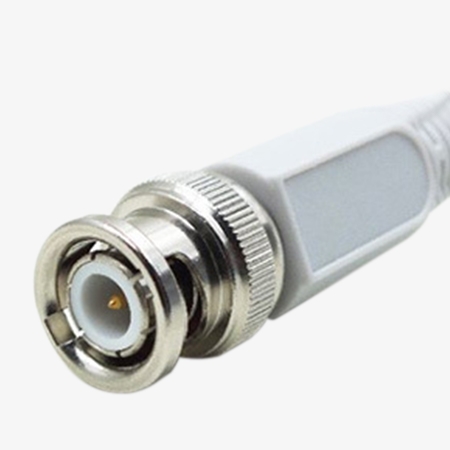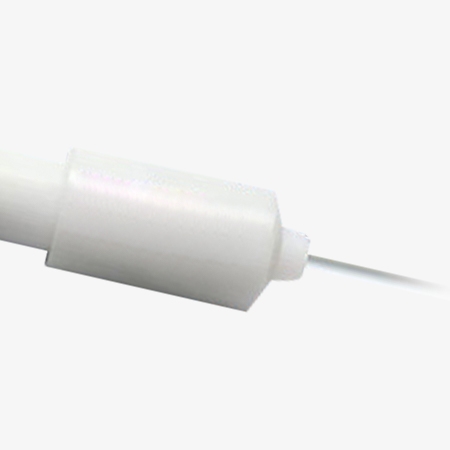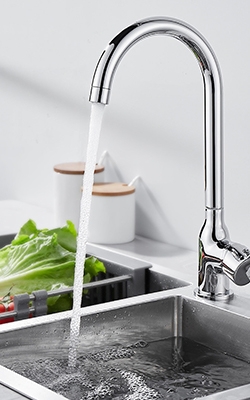The ammonia gas-sensitive electrode features a refillable design for easy upkeep and long-lasting performance, reducing the need for frequent replacements. Its durable acrylic housing offers strong protection, while the glass membrane ensures high sensitivity for precise ammonia measurements. Capable of operating in basic solutions with a pH range above 11 and within a temperature range of 5 to 45°C, this electrode delivers reliable results under various conditions. With a wide measurement range and a BNC (Q9 type) connector for secure, stable connections, it is ideal for accurate ammonia detection in a variety of environments.

Design Features of the Ammonia Gas-Sensitive Electrode
- Refillable design for easy maintenance and prolonged use of this gas-sensitive electrode.
- Consistent and accurate measurements.
- BNC (Q9 type) connector for secure and stable electrical connection.

Function and Performance of Ammonia Electrode
- The ammonia gas-sensitive electrode supports a wide measurement range.
- Designed for stable performance, this ammonia electrode operates efficiently within a temperature range of 5 to 45°C, adapting well to typical laboratory and field conditions.
Application
The ion selective electrode is a versatile tool widely used for monitoring and analyzing water quality across various applications. It is particularly effective in testing drinking water, domestic water, pool water, and industrial water, ensuring compliance with safety and regulatory standards. Its high sensitivity to specific ions makes it ideal for detecting trace contaminants in these water sources. Additionally, the electrode can be used for analyzing surface water and groundwater, providing critical data for environmental monitoring and pollution control. Whether for routine quality checks or environmental research, the ion selective electrode offers reliable, precise measurements to help maintain safe and clean water across different settings.

Domestic Water

Pool Water

Industrial Water

Drinking Water
| Model | SISCO-ISE-PNH3-1-01 | SISCO-ISE-PNH3-3 |
| Type | Ammonia gas-sensitive electrode | Ammonia gas-sensitive electrode |
| Measurement Range | 10⁻¹~5×10⁻⁶ mol/L ammonium ion concentration | 0.05~1000mg/L |
| pH Range | >11 | >11 |
| Operating Temperature | 5~45℃ | 5~45℃ |
| Filling Solution | Refillable | Refillable |
| Standard Solution | NH₄Cl | NH₄Cl |
| Ion Strength Adjuster (Powder) | Regular concentration ammonia gas-sensitive electrode | Regular concentration ammonia gas-sensitive electrode |
| Ion strength adjuster Type II | Ion strength adjuster Type II | |
| Housing Material | Acrylic | Acrylic |
| Sensitive Membrane Material | Glass membrane | Glass membrane |
| Dimensions | Φ16×85 mm | Φ16×105 mm |
| Connector | BNC (Q9 type) | BNC (Q9 type) and U-type forked terminal |
Q1: What is an ion selective electrode (ISE)?
A1: An ion-selective electrode (ISE) is a type of sensor designed to measure the concentration of specific ions in a solution. It is used in various fields, such as environmental monitoring, clinical diagnostics, and industrial applications, for real-time ion concentration measurements. ISEs are highly valued for their simplicity, accuracy, and ability to provide precise data without the need for complex sample preparation. These electrodes offer a quick and reliable way to monitor ion levels in a variety of solutions.
Q2: How does an ISE work?
A2: An ion-selective electrode (ISE) works by utilizing a membrane that selectively interacts with a specific ion in a solution. The electrode generates an electrical potential when the ion of interest interacts with the membrane. This potential is directly related to the concentration of the ion in the solution. The ISE typically consists of a reference electrode and an ion-selective membrane, which allows the target ion to pass through or interact with it, while minimizing the influence of other ions. The measured potential is then used, along with the Nernst equation, to calculate the ion concentration in the solution. This enables accurate and real-time measurement of ion levels.
Q3: What types of ions can an ISE measure?
A3: An ion-selective electrode (ISE) can measure a wide range of ions, depending on the type of membrane it uses. Commonly measured ions include sodium (Na⁺), potassium (K⁺), calcium (Ca²⁺), chloride (Cl⁻), ammonium (NH₄⁺), nitrate (NO₃⁻), and hydrogen ions (H⁺), among others. Each ISE is designed to selectively respond to a particular ion or group of ions, allowing precise measurements in different applications. For example, a sodium ISE can be used in clinical diagnostics to monitor blood sodium levels, while a chloride ISE may be used in environmental monitoring to assess water quality. The ability to measure specific ions makes ISEs highly versatile tools in fields like chemistry, biology, medicine, and environmental science.
Tips: The differences between a GSE and an ISE?
A Gas-Sensitive Electrode (GSE) is a type of Ion Selective Electrode (ISE). The key difference is that while ISEs are designed to measure the concentration of specific ions in a solution, GSEs are a subtype of ISEs that are specifically designed to measure the concentration of gases dissolved in a solution.
In essence, a GSE operates on the same basic principle as an ISE — it measures the electrochemical potential created by an interaction between a sensing membrane and the analyte. However, GSEs use membranes that are selective to gases, allowing them to detect gases like oxygen or carbon dioxide, while traditional ISEs use membranes that selectively interact with ions. Therefore, GSEs are considered a specialized form of ISEs, focused on gas analysis rather than ion analysis.
Thank you for buying industrial test and measurement equipment on SISCO.com, all products sold by SISCO and the partner cover a 12 months warranty, effective from the date of receiving the products.
What is covered?
SISCO is responsible for providing free spare parts, and free technical support to assist the customer to repair the defective products until the problem is solved.
What is not covered?
- Product purchased from anyone other than a SISCO store or a SISCO authorized reseller.
- Expendable parts.
- Routine cleaning or normal cosmetic and mechanical wear.
- Damage from misuse, abuse or neglect.
- Damage from use of parts other than SISCO approved.
- Damage from use outside the product’s usage or storage parameters.
- Damage from use of parts not sold by SISCO.
- Damage from modification or incorporation into other products.
- Damage from repair or replacement of warranted parts by a service provider other than a SISCO authorized service provider.
- Damage caused by the application environment not meeting the product usage requirements and the failure to perform preventive maintenance.

